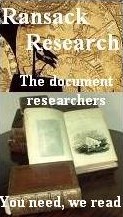|
Burt Webber Jr. was born in Annville, Pennsylvania. From the age of six he conceived a desire to find sunken treasure.
Burt graduated from high school in 1960, but rather than go to college, he enrolled in the Divers Training Academy in Miami (after being turned down by the Navy, because he had asthma).
Burt soon met Art McKee, when visiting Art's Museum of Sunken Treasure in the Keys. The next year, Webber joined McKee and others in an effort to salvage an 18th century shipwreck off Jamaica. The group found artifacts, but no treasure.
Burt was part of a dozen expeditions in the Caribbean, without having any luck in finding treasure. During this time he also got married and had four children. He worked part time jobs as a brickmaker, welder and (successful) encyclopedia salesman.
Burt worked with another Florida treasure hunter, Jack Goin Haskins. Haskins became his researcher, travelling on an annual basis to the Archives of the Indies in Seville. Haskins found a lot of information about the Nuestra Señora de la Concepciòn.
Webber spent ten years searching - on an intermittent basis, for the Atocha, but was beaten by Mel Fisher. After this, Burt returned to Annville, where his wife Sandy and their four children lived. For two years he worked in a brick factory, and also sold encyclopedias.
Haskins suggested that they search for the Concepcion instead. His research narrowed their search area to a 46-mile-long section of the 46-mile-long stretch of the Silver Shoals, 80 miles off the Dominican Republic, in international waters.
1976
Webber's previous expeditions had failed because they had not been properly financed. He decided to handle the search for the Concepcion differently. He approached Warren Stevens, an investment banker who was in charge of the investment organization called the December Group, who agreed to fund the project - codenamed Operation Phips (after the 17th century salvor, William Phips).
The Dominican Republic wanted half of any treasure found - a harder bargain than Webber had anticipated. But they agreed to it, for Webber didn't want any difficulties after findiung the Concepcion.
Webber and his group, using a vessel called the Big G, searched for two years before they found their Mother Lode.
late January 1977
Webber's expedition, aboard the Big G, arrives in Puerto Plata.
They spent the first season searching the 6 miles of Half Moon Reef, where they found 13 wrecks dating from the late 17th to the 19th centuries - but no Concepcion.
The group that formed Operation Phips then disbanded.
Researcher Jack Haskins did not give up, however. He returned to the archives in Spain and looked further. Receiving information from a fellow researcher, Haskins learned of a ship's log in the Kent Archives at Maidstone which held the answer.
The wreck was confirmed to be on the Half Moon Reef.
Webber spent the next year developing a more sophisticated form of magnetometer - a diver-operated, completely submersible, hand-held cesium magnetometer, with a sensor head so designed that it could reach into nooks and crannies of the reef.
Most of the original group got together again, once again financed by the investment group. Their boat this time was the Samala.
November 30, 1978
Burt Webber, at the age of 36, was about to find the Concepcion. Other members of the team were Jim Nace, Jack Haskins, Don Summer, Duke Long, Johnnie Berrier, John Harrier, Bob Coffey,and Henry Taylor.
Jim Nace found a coin. By the end of the day, they'd found 128 pieces of eight, and some porcelain from the late Ming period.
Although the salvors did find treasure scattered among the bottom, most of the treasure had already been salvaged by William Phips.
It took Webber's team eleven months to salvage everything at the site.
After everything had been divided between the Dominican government, The government placed it in the second floor of the Dominican Republi National Museum.
A selection of this treasure toured a dozen US cities, where over 1.5 million people saw it. A CBS documentary, "The Lost Treasure of the Concepcion," was also broadcast on TV.
|
